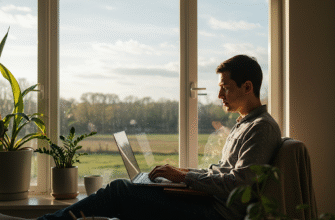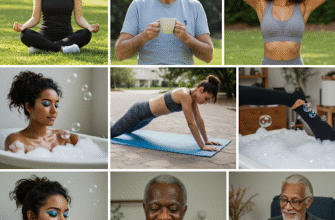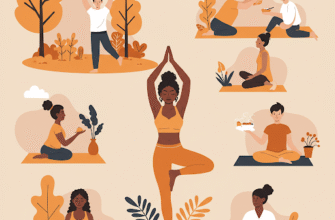Pilates, often perceived as a gentle exercise form, is actually a powerhouse for building strength, improving balance, and enhancing overall body awareness. Unlike high-impact workouts that can strain your joints, Pilates focuses on controlled movements, core engagement, and precise breathing techniques. This makes it a fantastic option for people of all ages and fitness levels, from seasoned athletes looking to refine their performance to individuals recovering from injuries or simply seeking a low-impact way to stay active. Let’s delve into the world of Pilates and discover how it can transform your strength and balance.
The Core Connection: Pilates Principles
The foundation of Pilates lies in its core principles. These principles aren’t just guidelines; they are the very essence of the practice, ensuring you get the most out of each movement.
Centering
Centering is all about engaging your “powerhouse,” which refers to the deep core muscles – abdominals, lower back, hips, and inner thighs. Think of drawing your navel towards your spine and maintaining this engagement throughout the exercises. This creates stability and support, protecting your spine and allowing for more efficient movement.
Concentration
Pilates demands mindful attention. You’re not just going through the motions; you’re consciously controlling each movement, focusing on the muscles involved, and maintaining proper form. This concentration cultivates a deeper connection between your mind and body, leading to improved body awareness.
Control
Control is paramount in Pilates. Every movement is executed with precision and deliberate control, minimizing momentum and maximizing muscle engagement. This not only prevents injuries but also ensures that you’re truly working the targeted muscles.
Precision
Precision goes hand-in-hand with control. It’s about performing each exercise with accuracy and attention to detail, ensuring correct alignment and proper muscle activation. Even small adjustments in your form can make a significant difference in the effectiveness of the exercise.
Breath
Breath is an integral part of Pilates. Specific breathing patterns are used to support the movements, enhance core engagement, and promote relaxation. Typically, you’ll inhale to prepare for a movement and exhale during the effort phase.
Flow
Flow refers to the smooth and graceful transitions between exercises. Movements are connected seamlessly, creating a continuous and fluid sequence. This not only improves coordination but also builds stamina and endurance.
Strength Training Through Pilates: More Than Just Core
While Pilates is often associated with core strength, its benefits extend far beyond the abdominal muscles. Pilates exercises target all major muscle groups, promoting balanced strength development throughout the body.
Core Strength
As mentioned earlier, core strength is a cornerstone of Pilates. By engaging the deep core muscles, Pilates provides a stable foundation for all movements, improving posture, reducing back pain, and enhancing athletic performance. Exercises like the plank, hundreds, and roll-up are excellent for building core strength.
Back Strength
Pilates strengthens the muscles that support the spine, helping to alleviate back pain and improve posture. Exercises like the swimming and back extensions target the back extensor muscles, while the saw and spine stretch forward improve flexibility and mobility.
Leg and Glute Strength
Pilates also strengthens the legs and glutes, contributing to improved balance, stability, and overall lower body power. Exercises like the single leg circle, side leg series, and bridging effectively target these muscle groups.
Arm and Shoulder Strength
While often overlooked, Pilates also strengthens the arms and shoulders. Exercises like the push-up variations, arm circles, and tricep dips on the reformer build upper body strength and stability.
Pilates is not just about strengthening your core; it’s about creating a balanced and functional strength throughout your entire body. This holistic approach helps improve posture, reduce pain, and enhance overall movement efficiency.
Balance and Stability: Finding Your Center of Gravity
Balance is an essential component of everyday life, and Pilates is an excellent way to improve it. By strengthening the core muscles and improving body awareness, Pilates helps you find your center of gravity and maintain stability.
Improved Proprioception
Proprioception is your body’s ability to sense its position in space. Pilates enhances proprioception by requiring you to pay close attention to your body’s alignment and movement. This heightened awareness allows you to make subtle adjustments to maintain balance and prevent falls.
Stronger Stabilizer Muscles
Pilates strengthens the small, often-overlooked stabilizer muscles that support your joints. These muscles play a crucial role in maintaining balance and preventing injuries. Exercises like the tree and standing leg exercises directly challenge your balance and strengthen these stabilizer muscles.
Enhanced Coordination
Pilates improves coordination by requiring you to perform complex movements that involve multiple muscle groups. This enhanced coordination translates to better balance and agility in everyday activities.
Increased Body Awareness
The mindful nature of Pilates fosters a deeper connection between your mind and body. This increased body awareness allows you to anticipate and react to changes in your environment, improving your balance and stability.
Getting Started with Pilates: Finding the Right Approach
There are several ways to get started with Pilates, depending on your preferences and resources.
Pilates Classes
Taking a Pilates class is a great way to learn the fundamentals and receive guidance from a qualified instructor. Group classes offer a supportive and motivating environment, while private sessions provide personalized attention and tailored instruction.
Online Pilates Programs
Online Pilates programs offer a convenient and affordable way to practice Pilates from the comfort of your own home. Look for programs that are led by certified instructors and that offer a variety of classes for different levels.
Pilates Equipment
Pilates equipment, such as the reformer, Cadillac, and chair, can add resistance and challenge to your workouts. However, it’s not necessary to have equipment to benefit from Pilates. Many effective Pilates exercises can be performed on a mat with minimal or no equipment.
Mat Pilates vs. Reformer Pilates
Mat Pilates is performed on a mat using your own body weight for resistance. It’s a great option for beginners and can be done anywhere. Reformer Pilates utilizes a specialized machine called the reformer, which provides adjustable resistance and allows for a wider range of exercises. Reformer Pilates can be more challenging and is often preferred by those seeking a more intense workout.
Before starting any new exercise program, it’s important to consult with your doctor, especially if you have any underlying health conditions or injuries. A qualified Pilates instructor can also help you modify exercises to suit your individual needs and abilities.
Pilates Modifications: Making it Accessible for Everyone
One of the great things about Pilates is its adaptability. Exercises can be modified to accommodate different fitness levels, injuries, and physical limitations. This makes Pilates accessible to a wide range of people.
Beginner Modifications
Beginner modifications often involve reducing the range of motion, using props for support, or performing exercises in a modified position. For example, a beginner might perform the roll-up with bent knees or use a rolled-up towel to support their lower back.
Advanced Modifications
Advanced modifications involve increasing the range of motion, adding resistance, or performing exercises in a more challenging position. For example, an advanced student might perform the roll-up with straight legs or add weights to their ankles.
Injury Modifications
Pilates instructors can also modify exercises to accommodate injuries. For example, someone with a shoulder injury might avoid exercises that put stress on the shoulder joint, or someone with a back injury might modify exercises to reduce spinal flexion.
Integrating Pilates into Your Fitness Routine
Pilates can be easily integrated into your existing fitness routine. Whether you’re a runner, cyclist, swimmer, or weightlifter, Pilates can complement your training by improving your core strength, balance, and flexibility.
Cross-Training Benefits
Pilates is an excellent form of cross-training, helping to prevent injuries and improve performance in other sports. By strengthening your core and stabilizer muscles, Pilates can enhance your power, agility, and endurance.
Recovery and Injury Prevention
Pilates can also be used as a recovery tool, helping to reduce muscle soreness and promote healing after intense workouts. The gentle and controlled movements of Pilates can improve circulation, reduce inflammation, and restore range of motion.
Frequency and Duration
The ideal frequency and duration of Pilates sessions will vary depending on your individual goals and fitness level. However, a good starting point is to aim for 2-3 sessions per week, lasting 45-60 minutes each.
The Mental Benefits of Pilates: Beyond Physical Strength
Pilates offers a multitude of mental benefits in addition to its physical advantages. The focus on mindfulness, concentration, and breath control can have a profound impact on your mental well-being.
Stress Reduction
The mindful nature of Pilates can help reduce stress and anxiety by calming the mind and promoting relaxation. The focus on breath control and body awareness can help you tune into your body and release tension.
Improved Body Image
Pilates can improve body image by increasing your body awareness and fostering a sense of appreciation for your physical capabilities. As you become stronger and more balanced, you may also feel more confident and comfortable in your own skin.
Enhanced Mood
Exercise, in general, is known to boost mood, and Pilates is no exception. The release of endorphins during Pilates sessions can leave you feeling happier, more energized, and more focused.
Increased Self-Awareness
The mindful nature of Pilates encourages self-reflection and introspection. As you become more aware of your body’s movements and limitations, you may also gain insights into your thoughts, emotions, and patterns of behavior.
Long-Term Benefits of Pilates: A Lifelong Practice
Pilates is not just a quick fix; it’s a lifelong practice that can provide numerous benefits throughout your life. From improving your posture and reducing pain to enhancing your balance and cognitive function, Pilates can help you stay active, healthy, and independent as you age.
Improved Posture
Pilates strengthens the muscles that support the spine, helping to improve posture and reduce the risk of back pain. Good posture not only looks better but also improves breathing, circulation, and overall well-being.
Reduced Pain
Pilates can help reduce chronic pain conditions such as back pain, neck pain, and arthritis. By strengthening the muscles around the joints and improving flexibility, Pilates can alleviate pain and improve function.
Enhanced Mobility
Pilates can help maintain and improve mobility as you age. The exercises promote joint flexibility, muscle strength, and balance, allowing you to stay active and independent for longer.
Cognitive Benefits
Studies have shown that Pilates can improve cognitive function, including memory, attention, and processing speed. The mindful nature of Pilates can help sharpen your mind and improve your overall mental agility.
In conclusion, Pilates is a versatile and effective exercise form that offers a multitude of benefits for strength, balance, and overall well-being. Whether you’re a beginner or an experienced athlete, Pilates can help you improve your physical and mental health. So, why not give it a try and experience the transformative power of Pilates for yourself?








